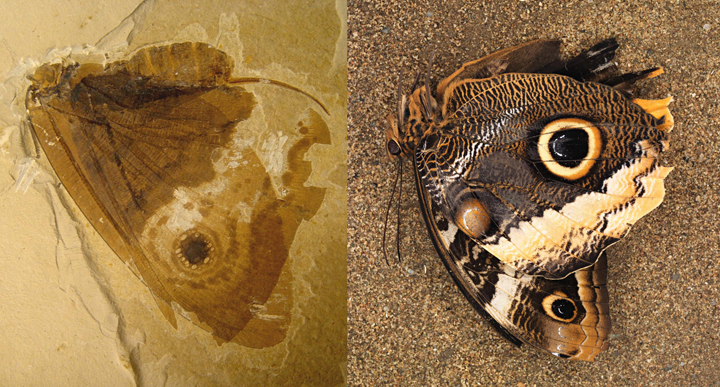Scientists have discovered similarities between butterflies of today and a butterfly-like insect that has been extinct for more than 120 million years.

Kalligrammitid lacewings existed millions of years ago during the Mesozoic Era and were, scientists believe, important pollinators in woodlands. They also had eyespot patterns similar to those found on some butterflies we see today, which serve to distract potential predators.
But interestingly, the butterflies of today didn’t exist until some 50 million years after the extinction of Kalligrammitid lacewings.
Another one of the similarities are the lacewing’s mouthparts. Modern butterflies use them to suck up nectar. But during the Mesozoic, there were no nectar-producing plants. Instead, the researchers believe that the lacewings could have fed on “sugary pollen drops produced by seed plants.”
The researchers also found scales on the wings and mouthparts, which are also seen on modern butterflies. These scales are believed to contain pigments that produce vibrant colours on the insects. As well, both species contain melanin at the centre of the eyespots.

Get breaking National news
“That, in turn, suggests that the two groups of insects share a genetic program for eyespot production,” said Smithsonian paleoecologist Conrad Labandeira who led the research. “The last common ancestor of these insects lived about 320 million years ago, deep in the Paleozoic. So we think this must be a developmental mechanism that goes all the way back to the origins of winged insects.”
The findings were reported in the journal Proceedings of the Royal Society B.





Comments